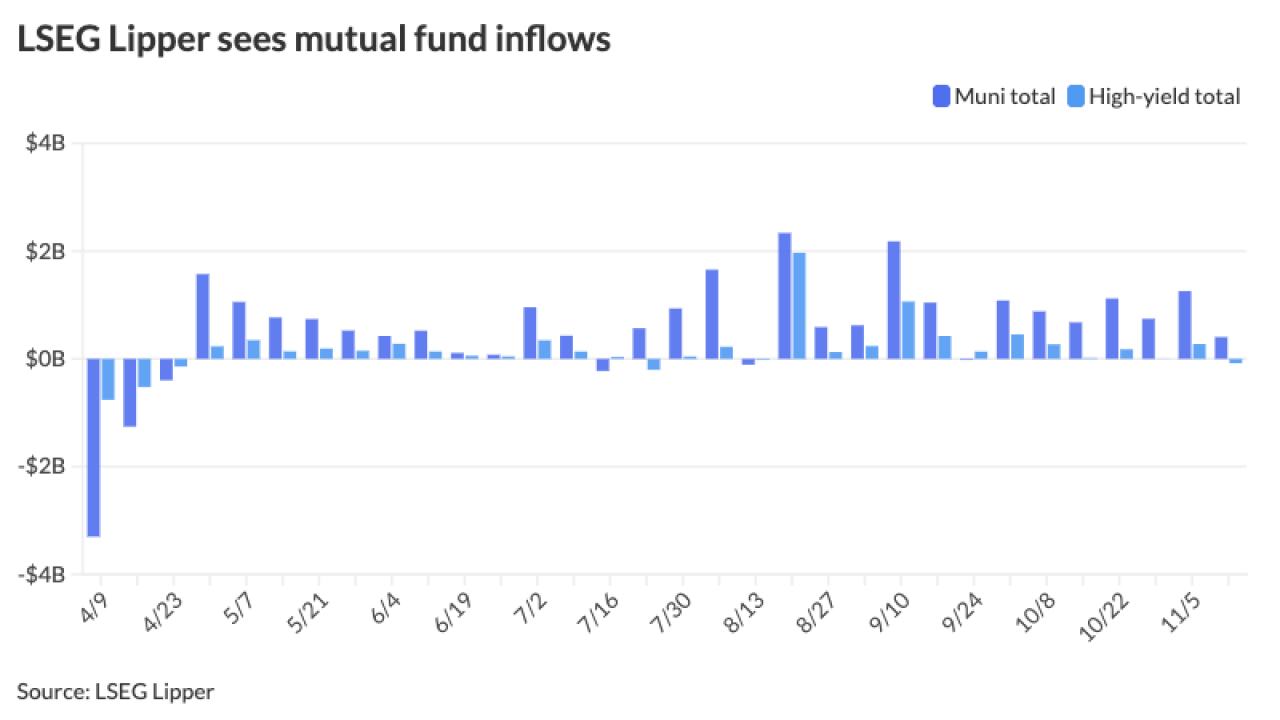
Puerto Rico's power outage may signal a need for greater investment in electric infrastructure, hurting returns for Puerto Rico Electric Power Authority bondholders who are in negotiations with the utility to restructure its business and debt.
Around 2:30 p.m. on Wednesday the island experienced a near total power outage. As of noon Thursday power had been restored to about 13% of customers, according Gov. Alejandro García Padilla.
The power outage will bolster the argument that less money should be devoted to debt service and more for investment in the system, said Fitch managing director Dennis Pidherny.
PREPA has been in debt negotiations for more than two years, led by the utility's chief restructuring officer Lisa Donahue. The authority has more than $8 billion in bond debt. The negotiations have centered on upgrading the island's energy sector while exchanging its debt for new debt of lower value.
The blackout comes after President Obama signed the Puerto Rico Oversight, Management and Economic Stability Act, setting up a control board to help the island deal with its $70 billion debt crisis.
The outage "goes to highlight the importance of a reliable electrical system in promoting a robust economy," Pidherny said. "This event may make the PROMESA [Oversight] Board look more carefully at PREPA."
Around 12:30 p.m. Thursday García Padilla declared a state of emergency in Puerto Rico to deal with the blackout. PREPA is the sole provider of electricity to island. Initially, nearly all of its electrical system was knocked off, the first time that had happened since 1980. Where the power was cut, only those with their own generators had electricity.
PREPA will be trying to assess the cost of repairing the system right now, said S&P director Jeff Panger. The cost of repair will be a challenge for an authority with "little cash on hand and virtually no liquidity," Pidherny said.
Panger said an explosion and fire in a transformer at the Aguirre plant probably led to an overload on some transmission lines, leading them to fail. Their failure increased demands on other parts of the electrical system and the demands went beyond the parts' handling ability. Circuit breakers were activated to shut down parts of the system to protect the parts from further damage as one breakdown led to a domino effect on the rest of the system.
Other reports indicated that the electrical system's first failures were two transmission lines near the Aguirre plant.
At least two major Puerto Rican news outlets quoted the president of PREPA's main union, Ángel Figueroa Jaramillo, as saying that one of the system's initial failing parts had been reported a month ago as needing maintenance. The outlets quoted the governor as denying this.
Panger said it will take time to find out if insufficient maintenance was a root cause of the problem.
Even if the initial failure wasn't due to a lack of maintenance, the fact that the rest of the system shut down may have to do with a lack of maintenance, Pidherny said. The system may not have sufficient redundancy to handle problems like those that developed.
Island systems like that of Puerto Rico can't turn to outside electrical sources and thus inherently have less redundancy, both analysts said.
PREPA's plants and transmission lines are comparatively older than average, Pidherny said.
In García Padilla's initial press conference late on Wednesday afternoon he had predicted that the system would be fully up by 2:30 p.m. Thursday. Around noon on Thursday the governor said he expected the entire electrical system to be operating by Friday afternoon, according to the El Vocero news web site.
The Puerto Rico Aqueduct and Sewer Authority reported that the electrical outage had either eliminated service or reduced water pressure for some of its clients.





